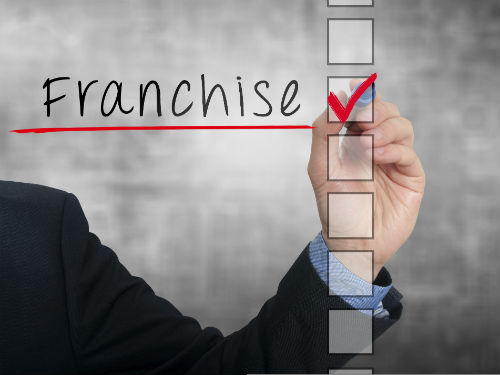The 4 Stages of the Franchise Life Cycle
June 30, 2023 | Posted by Jani-King Team
Franchising enables entrepreneurs to start and grow their own businesses while benefiting from an established brand’s proven systems, processes, and support. However, taking the business to the next level can be a daunting prospect for new franchise owners. Understanding the different stages of the franchise life cycle makes running a franchise much easier and helps them to navigate any challenges more effectively.
In this post, we’ll explore the various stages of running a franchise, from business development and growth to maturity and the potential renewal or exit strategies.
What is a franchise?
A franchise is a business model where a franchisee is given the rights to operate a business using the branding, systems and support of an established business owned by the franchisor. The franchisee pays fees and royalties to the franchisor in exchange for access to a proven business model, training, marketing and ongoing support. Franchises give entrepreneurs a unique opportunity to start a business with a greater chance of success than if they were beginning completely from scratch. Franchises are often already well-known, reducing the need to educate customers. This allows franchisees to focus more on delivering their products and services, saving them valuable time and marketing resources.
What is a franchise lifecycle?
The franchise lifecycle is the different stages a franchise business goes through, encompassing franchise development, growth, maturity and renewal or exit strategies. While the exact number and names of the stages vary depending on different perspectives, there are commonly four key stages. Each stage of the franchise lifecycle represents a distinct period with specific characteristics and goals.
Why understanding the stages of the franchise lifecycle is important
Understanding the franchise lifecycle helps franchisees and franchisors to successfully navigate the different periods, make informed decisions and implement appropriate strategies for long-term success within the franchise system. By getting to grips with these stages, you can make informed decisions about starting, operating and expanding a franchise. Here we’ll look at each stage of the franchise lifecycle in more detail:

1. Development stage
This first stage of the franchise lifecycle, also referred to as the start-up or investigation phase, has two key elements. It’s where the franchisor explores the potential of the market for its products or services and the opportunities available to them. This leads them to create the business model, establish the brand and develop the necessary systems, operations and support infrastructure for franchisees. Franchisees also enter this stage by investing in the franchise and gaining access to guidance and support from the franchisors and fellow franchisees within the network.
Guidance for franchisors
- Develop a robust business model that can be replicated and scaled across multiple locations
- Build and establish a strong brand image to attract potential franchisees and customers
- Focus on developing key branding elements such as the logo, marketing materials and messaging
- Develop your support infrastructure by establishing the necessary systems, operations and support mechanisms to support franchisees
Guidance for franchisees
- Thoroughly research the franchise, including looking at the franchisor’s business record, financials and reputation
- Ensure you fully understand the franchise agreement and your obligations as a franchisee
- Utilise the resources, guidance and support provided by the franchisor, including training programmes, operational manuals and mentorship from experienced franchisees within the network
- Assess the potential market demand, competition and profitability of the franchise before investing
2. Growth stage
A franchise business typically enters the growth stage after two years, although this timeframe can vary. It’s a pivotal time for the franchise and is often characterised by expansion, increasing market presence and a steady flow of customers. During this stage, the franchisor and franchisee usually work together to look at further growth opportunities.
Guidance for franchisors
- Look for potential target markets and areas for expansion, taking into account factors such as market demand, demographics, and competition
- Continuously work on improving franchisee training programmes, operational processes and your support infrastructure to meet the needs of an expanding franchise network
- Encourage communication and collaboration among your franchisees that fosters knowledge sharing and exchanging ideas and best practices
Guidance for franchisees
- Focus on implementing effective marketing strategies to attract customers and increase your market share
- Take advantage of all the ongoing support, marketing resources, training and operational guidance available to you from the franchisor
- Regularly assess key performance indicators, customer satisfaction and profitability to help you spot areas for improvement and also capitalise on potential growth opportunities
3. Maturity stage
After several years, your franchise will reach the maturity stage of the franchise lifecycle. This is when cash flow is healthy, your revenue is sufficient to cover all your costs, and you make a good profit. You may have also started expanding into new areas and locations. However, don’t be tempted to take your foot off the accelerator. To ensure continued growth, you must consider what your competition is doing, how you can expand and whether it’s time to sell and move on.
Guidance for franchisors
- Continue supporting franchisees, monitoring and evaluating their performance to ensure consistent brand standards and profitability
- Continuously look at ways to innovate and adapt your franchise model, for example, by introducing new products, services or technology to stay relevant and competitive
- Enhance brand loyalty by utilising customer retention strategies and loyalty programmes and ensure exceptional customer service is delivered across the brand
Guidance for franchisees
- Look for ways to differentiate your business from competitors. This means getting to grips with your unique selling points to help your business stand out
- Focus on delivering excellent customer service to strengthen customer loyalty and drive repeat business
- Continuously look for ways to improve operations, optimising processes to improve efficiency and reduce costs. For example, streamlining workflows, utilising technology to improve productivity or refining supply chain management
- Explore opportunities for expanding into new markets, diversifying your product or service offerings or introducing additional locations
4. Renewal or exit stage
The renewal or exit stage of the franchise lifecycle is a critical phase. It’s where both franchisors and franchisees look at the franchise’s future and whether it will become an enduring market presence or fade away. Depending on the level of competition, the impact of industry changes, and customer demand, a franchisee will need to consider whether it’s time for them to sell and move on or reinvest.
Guidance for franchisors
- Review your franchisees’ performance and success in adhering to brand standards, customer satisfaction and profitability. Use this to determine whether renewal is in the franchise’s best interest
- Support franchisees who exit the franchise, provide guidance on selling the franchise, helping to facilitate transitions and ensuring a smooth handover to new owners
- Use this crucial stage of the franchise lifecycle to evaluate your franchise system, identifying areas for improvement and making adjustments to improve long-term sustainability
Guidance for franchisees
- Assess the ongoing financial viability of the franchise and the personal satisfaction and rewards you get from it. Consider your options for renewal or exit based on your personal goals and circumstances, market conditions and profitability
- If you want to exit the franchise, explore the different exit strategies available, such as selling the franchise to a new owner or closing it altogether. Get advice from the franchisor or relevant industry professional to help you navigate this process as smoothly as possible
- Utilise support from the franchisor and collaborate with them to ensure a successful and seamless exit or transition plan
When you choose Jani-King as your cleaning franchise partner, you’ll have access to a wealth of support and expertise throughout your franchise journey. We understand what it takes to run a successful cleaning business and ensure you don’t face the challenges alone. Our comprehensive support system, training programmes and dedicated team are here to help you at every stage.
Contact us today to take the first step to owning your own cleaning franchise. You’ll discover the advantages of partnering with one of the world’s most successful cleaning franchises. We’ll provide you with all the tools, training and ongoing support you need to build a successful franchise business.
You also might be interested in

Everything You Need to Know About a Cleaning Franchise Business
May 15, 2023
Life After Redundancy: Your 5 Exciting Options
January 26, 2023
